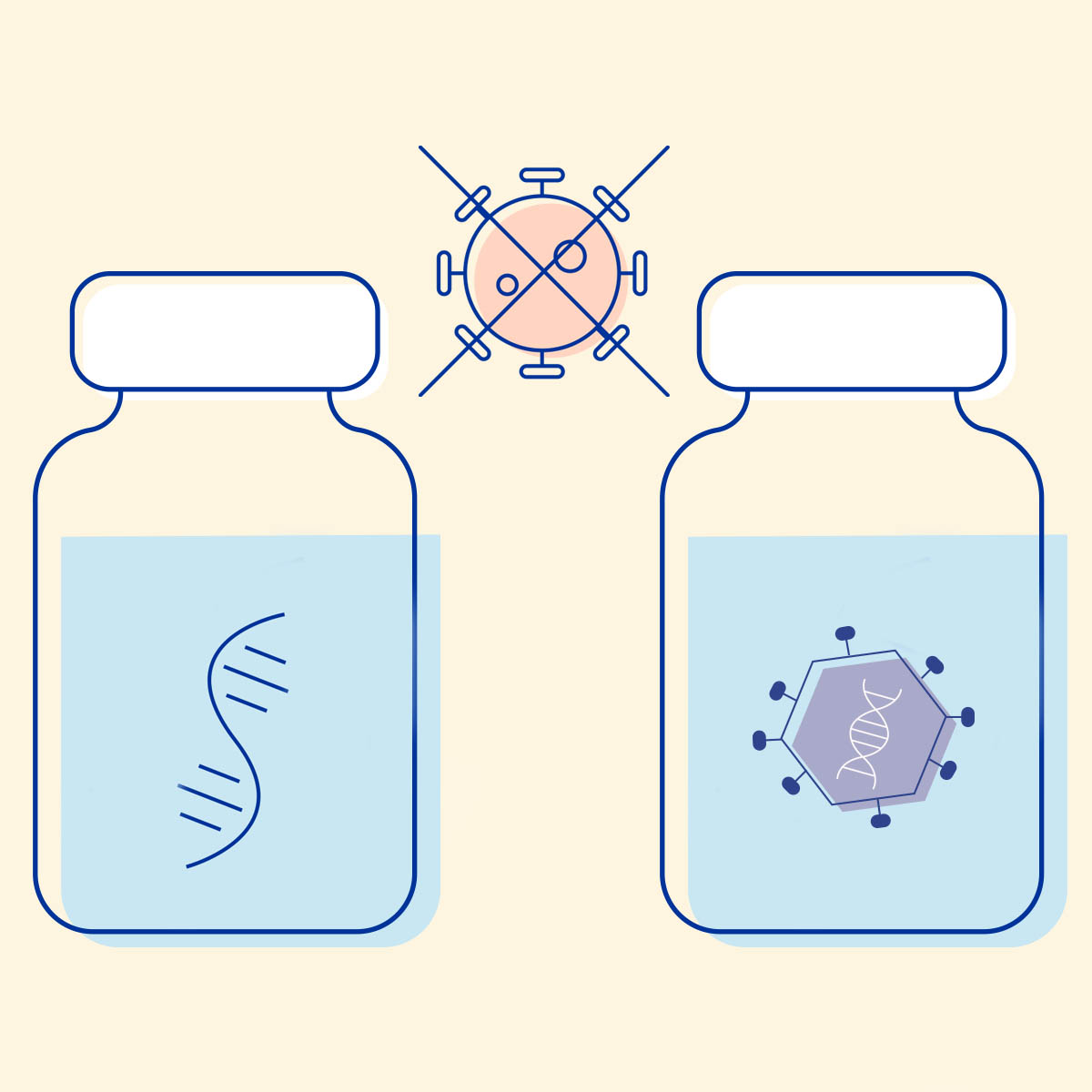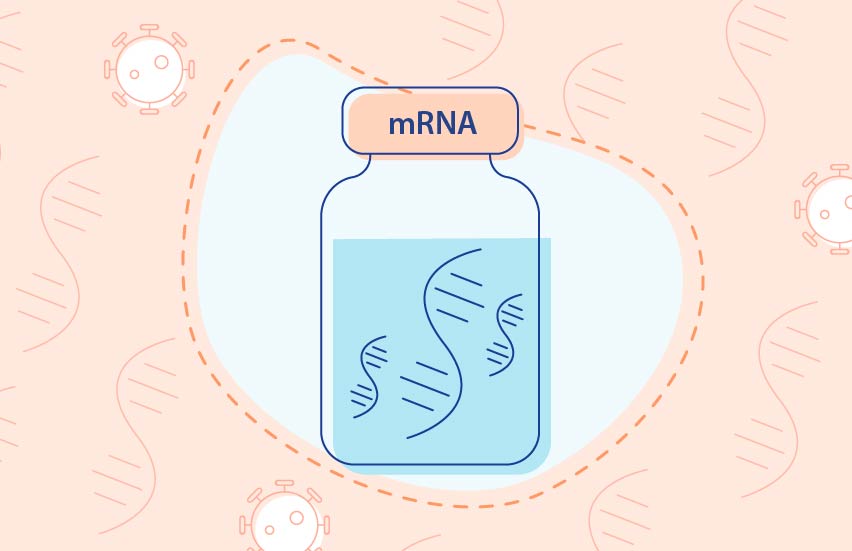The COVID-19 vaccine technologies for non-scientists

date: 05/02/2021
You might already know the names of the laboratories behind the three COVID-19 vaccines that are being distributed in the EU so far: BioNTech/Pfizer, Moderna and AstraZeneca. But did you know that none of the vaccines they’ve developed contain the coronavirus, but rather instructions telling your body how to create a tiny part of the coronavirus? We’re talking about the ‘spike’ protein, the part of the virus that lets it enter your cells and reproduce, making you ill.
Creating the ‘spikes’ to trigger an immune response
But, hold on, why ask my body to create these malicious proteins? The spike proteins play a key role in infecting your cells with coronavirus, but are completely harmless on their own. By creating the spike proteins, your body gets familiar with them in a safe way and develops an immune response that it will remember in the future. If you become infected with coronavirus at a later stage, your body will recognise its spike proteins and kill the virus off. This way you’ll be protected from getting the COVID-19 disease.
Preventing COVID-19 through two different approaches
The three vaccines instruct your body to create the spike proteins so that you don’t fall ill if infected. However, they are based on different technologies.
The vaccines from BioNTech/Pfizer and Moderna use mRNA (or Messenger RNA), a type of molecule, to ask your cells to create the spike proteins. AstraZeneca’s vaccine is a viral vector. It doesn’t use mRNA, but another type of molecule called DNA inserted into another virus, named adenovirus, which acts as a carrier. The adenovirus that AstraZeneca uses is a modified version of a mild virus that is completely harmless. It just helps deliver the instructions safely to your body’s cells.
Would you like to see how they work and what happens inside your body when you get one of these vaccines? Check out these infographics which explain the two technologies:
Are vaccines against COVID-19 safe?
Although both mRNA and viral vector vaccines use tiny pieces of genetic material, they can’t alter or interact with your DNA. In addition, your body gets rid of the genetic instructions and the spike proteins (and the adenovirus, in the case of AstraZeneca vaccine) in a matter of days.
You can rest assured, the European Medicines Agency (EMA) has made sure the three vaccines comply with the necessary quality, safety and efficacy requirements - which are exactly the same as for any other vaccine in the EU. Furthermore, the safety and effectiveness of these vaccines are monitored continuously.
Why maintaining the preventive measures is key
Remember that no one is safe until everyone is safe. Only a small proportion of the EU’s population has been vaccinated so far, meaning that many people are still at risk.
In addition, there is solid evidence that vaccines help protect you against the COVID-19 disease, but we don’t know yet if they can protect us against infection or against transmitting the virus to others. This is why masks, social distancing and hand-washing have to stay with us for a while.
For how long? We don’t know yet, but let’s stay positive. More vaccines are on the way, and hey! Spring is just around the corner.
Read more about COVID-19 vaccines and how they are approved. Find out what the EU is doing for you in this crisis.


